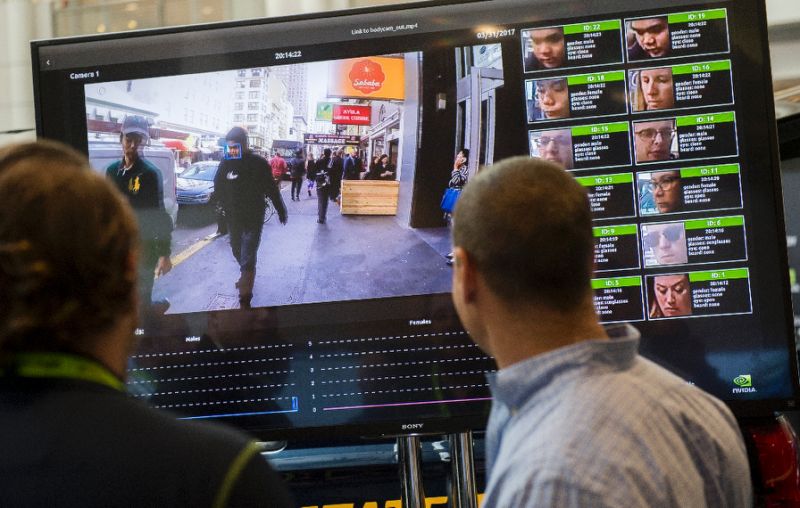Here we go again! Computers are taking over the world, your privacy is being invaded. Except, the example photo used to foreshadow such abuse, doesn’t. The article describing the coming privacy apocalypse offers no facts to support the fear. The majority of the article documents the current state of electronic surveillance and means and methods designers are using to get a more useful system. Like the photo, there is no indication of abuse, nefarious purposes, or privacy invasion. Privacy-fears-over-artificial-intelligence-crimestopper.
The best Marc Rotenberg can do is offer an opinion unsupported by facts. Marc Rotenberg, president of the Electronic Privacy Information Center, the rapid growth in these technologies raises privacy risks and calls for regulatory scrutiny over how data is stored and applied.
“Some of these techniques can be helpful but there are huge privacy issues when systems are designed to capture identity and make a determination based on personal data,” Rotenberg said.
Using the photo above, Let’s suppose the following scenario. The two guys watching the screen are cops standing fifty feet away, in “real time.” The guy in the green jacket, with the Polo Emblem, is about to be mugged by the guy in black jacket coming up behind him. Who in this scene has a reasonable expectation of privacy? Nobody, it is a public street. As the mugging takes place, the officers intervene and make an arrest. Whose Privacy rights have been violated? The guy in black is tried for the offense in six months, six years or six decades later based on the eyewitness testimony. Does the time between arrest and trial trigger a privacy concern? The answer is there are no privacy concerns triggered in this scenario.
Keep the mugging scenario only this time police are monitoring a street scene from a centralized location. With facial recognition software, they identify the guy in black as a known mugger, from the movements of the guy in black the computer posits that the guy in black is about to attack the Polo guy. This information does nothing to help the Polo guy. It may cause the police to focus on the pair exclusively rather than maintain a general street view. The mugger does his thing and begins to make his getaway. Our watching officers are no longer in a position to effect an arrest. They may or may not have called other officers to respond, in anticipation of the event. They are able to do a number of things. (1) Put out an immediate broadcast of the crime in progress, (2) Provide a detailed description of the mugger and the direction of his immediate flight. (3) Identify the mugger as a suspect to the camera grid so that his movements are tracked as he moves from one camera vantage point to the next. (4) Direct officers to his home or known hangouts. Show me an instance where the mugger has a reasonable expectation of privacy either during the offense or the flight afterward.
Although unlikely, the police should be able to replicate the suspect’s movements by interviewing people on the street. This isn’t practical because aren’t necessarily observant or cooperative as the police might like. Eyewitnesses vary in credibility and memories fade. With that said, eyewitness testimony helped to convict Klause Barbie for “crimes against humanity” forty years after the fact.
Has there been an erosion of privacy in the past twenty years? Certainly. Is the government responsible, a little bit, more from system efficiencies than an actual manipulation. Let’ play a game. Call a Pizza parlor at random order a pizza for cash pick up. Try to get off the telephone without providing your telephone number or address. Remember this is a cash transaction who you are and where the Pizza is going is immaterial to the transaction. People seem willing to give up all sorts of anonymity for the ability to have a hot pizza.
Provide the information the merchant requests and you can get anything. When I was working narcotics, one of the guys “Blutto” regularly warned us of government intrusion into our lives via computer. This didn’t stop him from using the latest and greatest technology to order a pizza. He was the only guy I knew that ordered a pizza while parked on the street conducting a surveillance. The pizza guy always delivered. They recognized his telephone number and knew from location notes and comments that the delivery was to a cop, possibly on a stakeout. One night he ordered a pizza and then had to pull away, only to return two minutes later. As soon as he pulled up to his previous parking space, in an upper-middle-class neighborhood, the porch light went on and a middle-aged guy came out pizza in one hand, Coke in the other. He walked up to Blutto’s car and said,”You owe me “12.95 for the Pizza, I threw in the Coke myself. I was going to call the cops, but the pizza guy told me not to bother, you are the police.” He turned around and went back to his house.
I’ll save the story about how Blutto took a raid team consisting of him in the lead vehicle, the jump-out van, commander’s car, K-9 car and two marked units through the MacDonald’s drive-in window.
